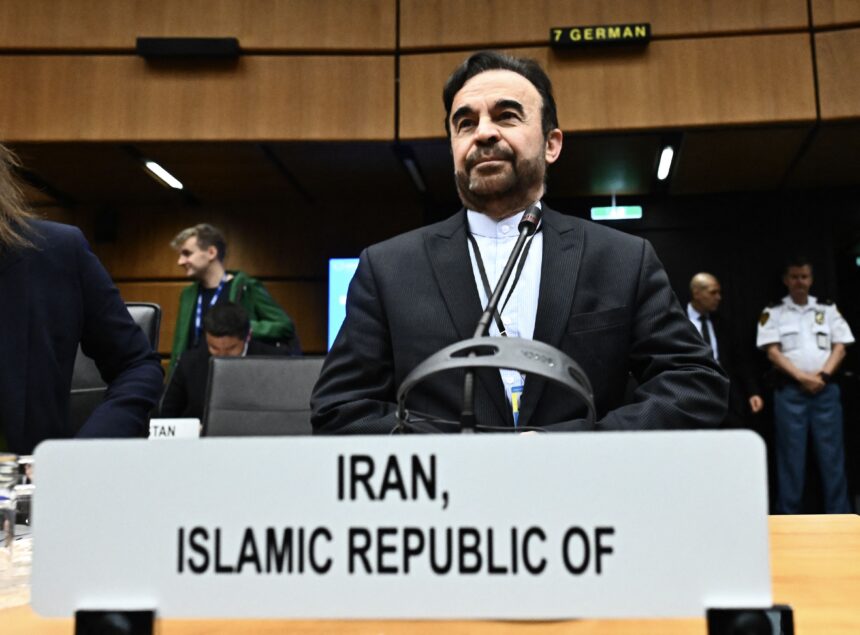VIENNA – Israel’s strikes on Iran have targeted several of its nuclear facilities, as it claims the Islamic republic is seeking to develop nuclear weapons — an accusation Tehran denies. Experts told AFP that while the attacks have caused some damage to Iran’s nuclear programme, they are unlikely to have delivered a fatal blow.
Here is an update on Iran’s nuclear sites as of yesterday: Israel’s operation included strikes on Iran’s underground uranium enrichment sites at Natanz and Fordow, and on its Isfahan nuclear site, the UN’s International Atomic Energy Agency (IAEA) said, citing Iranian officials. A key, above-ground component of Iran’s Natanz nuclear site has been destroyed, including its power infrastructure. Agency chief Rafael Grossi said Monday that there has been “no indication of a physical attack on the underground cascade hall containing part of the Pilot Fuel Enrichment Plant and the main Fuel Enrichment Plant”. However, power loss at the cascade hall “may have damaged the centrifuges”, the machines used to enrich uranium. There was “extensive” damage to the site’s power supply, according to a report from the Institute for Science and International Security (ISIS), a US-based organisation specialising in nuclear proliferation, which analysed satellite images. If backup power is lost, “at the least, the enrichment plant is rendered inoperable for the time being”, it said. At Iran’s underground Fordow enrichment plant, the country’s second uranium enrichment facility, the IAEA observed “no damage” fol lowing the attacks, Grossi said. At the Isfahan nuclear site, however, “four buildings were damaged”: the central chemical laboratory, a uranium conversion plant, the Tehran reactor fuel manufacturing plant, and a metal processing facility under construction, the IAEA said. Significant uranium stockpiles are believed to be stored around the Isfahan site. Ali Vaez, International Crisis Group’s Iran project director, told AFP that if Iran managed to transfer significant quantities to “secret facilities,” then “the game is lost for Israel”. Iran’s only nuclear power plant, the Bushehr plant, was not targeted, nor was the Tehran research reactor.
While “Israel can damage Iran’s nuclear programme… it is unlikely to be able to destroy it,” Vaez said, arguing that Israel does not have the massively powerful bombs needed “to destroy the fortified, bunkered facilities in Natanz and Fordow”. Destroying those would require US military assistance, added Kelsey Davenport, an expert with the Arms Control Association. She also stressed that Israel’s unprecedented attack cannot erase the expertise Iran had built up on nuclear weapons, despite killing nine Iranian nuclear scientists. The IAEA has not detected any increase in radiation levels at the affected sites. “There is very little risk that attacks on Iran’s uranium enrichment facilities would result in a harmful radiation release,” said Davenport . But an attack on the Bushehr plant could “have a serious impact on health and the environment”, she added. After Israel launched its strikes, Grossi said that nuclear facilities “must never be attacked” and that targeting Iranian sites could have “grave consequences for the people of Iran, the region, and beyond”. After the United States unilaterally withdrew in 2018 from a landmark deal that sought to curb Tehran’s nuclear activities, Iran has gradually retreated from some of its obligations, particularly on uranium enrichment . As of mid-May, the country had an estimated 408.6 kilograms enriched to up to 60% — just a short step from the 90% needed for a nuclear warhead. Iran theoretically has enough near-weapons-grade material, if further refined, for about 10 nuclear bombs, according to the definition by the Vienna-based IAEA. Iran is the only non-nuclear-armed state producing uranium to this level of enrichment, according to the UN nuclear watchdog. While the IAEA has been critical of Iran’s lack of cooperation with the UN body, it says that there are “no credible indications of an ongoing, undeclared structured nuclear programme”. Tehran has consistently denied ambitions to develop nuclear warheads. But Davenport warned the strikes could strengthen factions in Iran advocating for an atomic arsenal . “Israel’s strikes set Iran back technically, but politically the strikes are pushing Iran closer to nuclear weapons,” she said. – Nampa/AFP


